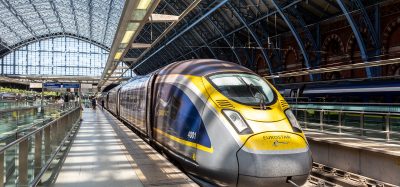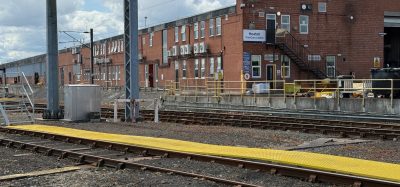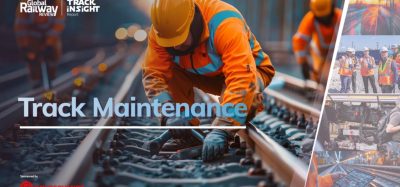Opportunities for Slovenian Railways in the liberalised railway transport market
Posted: 23 January 2009 | | No comments yet
Tomas Schara, Director General, Slovenian Railways describes his role The Strategic Group Plan in the future of a liberalised railway transport market.
Tomas Schara, Director General, Slovenian Railways describes his role The Strategic Group Plan in the future of a liberalised railway transport market.
The Act on Railway Transport of the Republic of Slovenia, enforced in 2007, established the distribution of roles among the different actors within the Slovenian railway system. The Slovenian Railways transports goods and passengers and they are an Infrastructure Manager and, together with their daughter companies offer, among others, services of traction maintenance, research and development as well as civil engineering to the national and international market.
The Public Railway Agency, an independent safety body responsible for path allocation, assignation of the safety certificates, licensing and setting the infrastructure usage fee, ensures non-discriminatory treatment of the several stakeholders on the Slovenian railway infrastructure. The Regulatory body deals with any eventual irregularities in the infrastructure market or the railway undertakings’ appeals. The State, through the Directorate for Investment, (a body within the Ministry of Transport), ensures the financing of the infrastructure maintenance and the infrastructure modernisation as well as any general interest services which are performed by Slovenian Railways.
I have been the Director General of Slovenian Railways Group for just over one year. We created The Strategic Group Plan, otherwise known as ‘Together on the Tracks’ which is estimated to be executed by the year 2015. The vision and the strategic goals can be summarised as follows:
“We want the Slovenian Railways Freight Transport to become the regional provider of logistic services as well as to offer integrated transport and logistic services on the Pan-European Corridors 5 and 10. Likewise, we want the Slovenian Railways Passenger Transport to develop into a local and regional integrator of different passenger transport modes. We want the infrastructure management to be an efficient provider of infrastructure management services and infrastructure maintenance in Slovenia. It will be necessary to ensure higher adequacy of capital and to create the conditions for the projected development of the company. Greater investment will be needed if we want to reach our strategic goals for freight transport, passenger transport, infrastructure maintenance and traffic management as well as new added-value services in the field of real estate and energy efficiency. To that end, we have just launched several development projects. Besides, we will have to seek out the resources: knowledge, experience and intellectual potential of today’s railway personnel as well as those who will join Slovenian Railways according to the development needs of the company.”
Competitive railway freight transport: a market opportunity
In 2007, the Freight Transport Business Unit of Slovenian Railways transported 19 million tonnes of goods and performed 3.9 billion tonnes of journey kilometres. During the last six years, tonne kilometres have been growing by 4.7%. The growth rate, up to 2011, is projected at 6% and for 6.3% up to 2015. We only hope that the world economic crisis will not have too much of an impact on the traffic volumes in the long term.
Slovenian Railways Freight Transport is more than 90% international business – 50% of which is land and port transit. The latter, as well as the liberalisation of the railway freight market in Europe since January 2007 that brought the first two new operators to the Slovenian network, form the core of the Slovenian Railways’ freight transport business policy.
Our policy includes a stronger market presence in international markets in order to control the traffic flows and to have direct contact with the end-users to be able to elaborate the right portfolio of services for the customers. In particular, we endeavour to offer direct trains between the terminals on the Pan-European Corridors 5 and 10 as well as in Slovenia together with additional transport and logistics services provided by Slovenian Railways. This would ensure higher quality services in national and international railway transport. Finally, and importantly, the freight business will be looking for the appropriate strategic partner.
Total investments of €491.7 million by 2015 will centre on the expansion of the capacity of our freight terminals, the purchase of additional multi-system and diesel locomotives, freight wagons and the refurbishment of existing traction, buildings, equipment and devices.
The challenges for the railway passenger transport
In 2007, the Slovenian railways carried a total of 16 million passengers and travelled 813 million passenger kilometres. Inland traffic represents the main share, with 85% in PKM.
Compared to other railway passenger markets in Europe, Slovenia is somewhat behind with regard to the average number of passengers per km of line per day with less than 2,000 passengers.
The negative element of market tendency is the increase in the number of private cars. Over the course of the last two decades, it has increased by 68%. Moreover, the Slovenian railway network does not properly and directly connect the potential markets.
The strategy of the Slovenian Railway Passenger Transport is based on the following elements:
- Higher quality of service
- Efficient general interest services
- Promote international traffic
- More attractive products for all market segments
- The development of stations as intermodal hubs and commercial centres.
In the framework of the strategic goals, we project a growth rate of 2.0% by 2011 and then 3.5% by 2015 in passenger kilometres.
The modernisation of rolling stock that started a few years ago is insufficient. Today, Passenger Transport of Slovenian Railways is facing a situation of overcrowded trains. In order for the strategy to become a reality and to be able to compete with other transport modes, Slovenian Railways have set out quite an ambitious development plan for the 2010-2013 period; that being to purchase 14 new EMUs, six DMUs and 30 new coaches. Besides, on the one hand, the purchase of mobile terminals for conductors, smaller stations, and new stationary terminals is almost completed, but on the other hand, we also foresee refurbishment and maintenance of traction, buildings and equipment. The total investment value is planned to reach €195.3 million by 2015.
It is essential for the Passenger Transport of Slovenian Railways that the goals of the national transport policy are fulfilled. The reinstatement of an integrated public transport system with the railroad as its backbone is definitely one of the most important goals. Slovenian Railways are already striving to regulate the relationship with their main customer, the State, by creating a contract in line with the new European legislation on public service transport by rail and road. Without a doubt, longer contract duration, not for one year as is the present situation, and proper public service compensation are indispensable to ensure the financial and performance stability of the railway passenger undertaking.
Finally, as we approach the liberalisation of the European passenger market at the beginning of 2010, Slovenian Railways are considering developing new forms of co-operation in international passenger traffic – not only keeping in mind the existing success stories in Europe – but also by giving some new, added value to international service.
Railway infrastructure needs to be modernised
Today, Slovenian Railways are facing bottlenecks on the Slovenian infrastructure that lower the perceived quality of services in the eyes of passengers and limit the promotion of railway freight traffic. The last national development railway infrastructure programme was adopted in 1995, but only 20% was completed. In transport infrastructure terms, the national priority has been given to the road development programme, particularly to the construction of highways. Now that the highway programme is approaching its final phase, we are expecting the state to earmark a bigger piece of the cake, or at least to give more sustainable attention to railway infrastructure. Finally, and importantly, the TEN-T European development plans force the development of Slovenian railway infrastructure. The understanding, firm commitment and true collaboration of the State authorities is essential to fulfil the plans to upgrade the network; while on the other hand, they must ensure the Infrastructure Manager that it will have financial stability to plan long term works and to be able to carry them out.
The new draft of the national railway development plan has been completed. The estimated value is €9 billion. In order to increase the capabilities of the Slovenian railway infrastructure and to reach the goal of shifting cargo transport from the road to the environmentally friendly railway and intermodal transport, we have to build several additional railway connections (or second tracks) on the Pan-European Transport Corridors 5 and 10 over the next few years. An additional track to connect the Port of Koper to the hinterland, second tracks towards Austria, an upgrade of the railway line towards Italy, the electrification of the line towards Hungary, an upgrade on the individual line sections on both corridors at least to category D3 (225 kN/Axle and 72 kN/m) and the implementation of the remote control of transport (ERTMS/ETCS) on main lines are all necessary.
In conclusion, it must be outlined that the development of the IT support to all the activities holds an important role at Slovenian Railways. Projects, whose goals are to ensure greater safety of the railway system, infrastructure and traction management transparency as well as increased business success of the Slovenian Railways Group as a whole, are underway. The IT solutions, such as TAF/TAP TSI, will be developed further following EU requirements and international developments.
The geographical location of Slovenian Railways is an advantage, as is the commitment to participate in and contribute to the development of international projects. The experts of Slovenian Railways are involved in many projects, such as:
- ERTMS/ETCS Corridor D
- Corridor X Plus (Pan-European Corridor 10 with its opportunities to connect the market potential between Europe and Asia through Turkey)
- RNE Corridor 8 (co-operation of Infrastructure Managers from France, Italy, Slovenia, Hungary)
- TRAINER (the programme that seeks solutions for efficient energy usage)
Issue
Related topics
Cargo, Freight & Heavy-Haul, European Rail Traffic Management System (ERTMS), European Train Control System (ETCS), Infrastructure Developments








